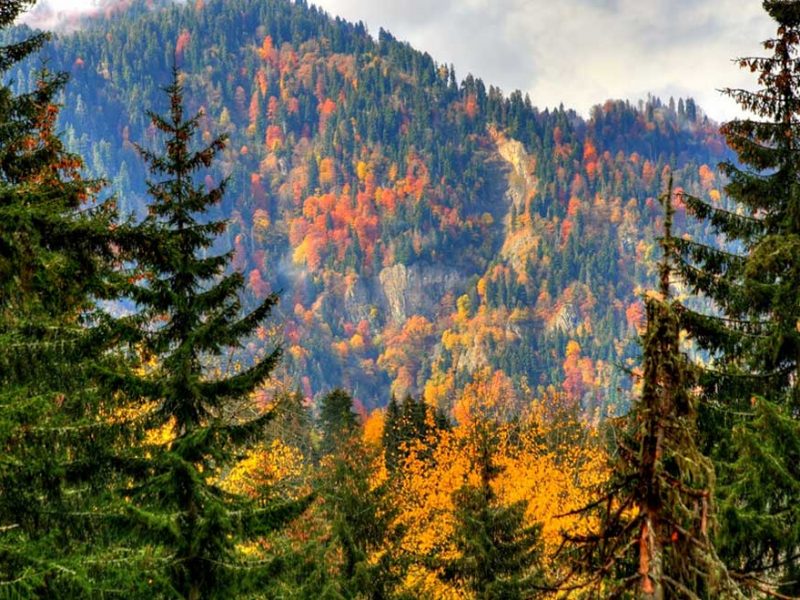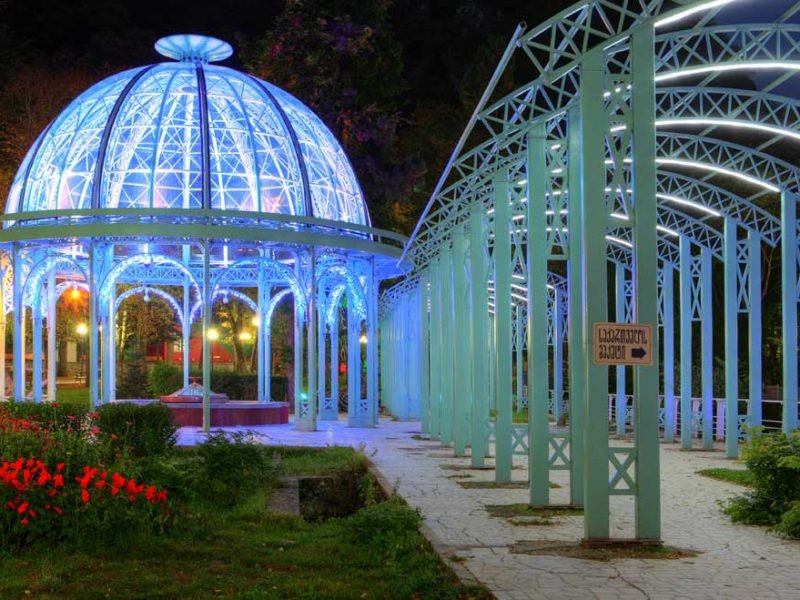Get In touch
If you would like to request more information, please let us know from the contact page
You will be soon contacted by our staff.
Phones: 995 577 191815, 995 596 191911, 995 599 909020
Tbilisi-Borjomi-Bakuriani-Tbilisi
Tour Info – Price 95 EUROS
Duration: Full Day
Borjomi is a resort town, located at the confluence of the rivers Mtkvari, Borjomula and Gujaretisckali, on the eastern slope of Meskheti range and western slope of Trialeti range, at an elevation of 800-900 meters above sea level. the town in bordered by Borjomi-kharagauli National Park from the east.
Green Monastery, officially known as Chitahevi St. George Monastery, is an 9th century friary located in the village of the name, in the Borjomi municipality. According to historians and archeologists, it was built by Chistopher and tevdrore, students od St. Grigol Khancdeli, a very influential figure in Georgian history. The monastery complex includes a basilica-type church and bell tower, also built in 9th century.
The beautiful Timotesubani monastery, also called the cathedral of the Holy Virgin, is a cross-cupola church built in 12th-13th centuries. It is located in Timotesubani village in Borjomi Gorge, in Georgia Samtskhe-Javakheti region. The interior of the church is decorated with best examples of Georgian mural painting of the 13th century. Originally the church had a blu roof, as the colour blue was highly appreciated during the Middle Ages, but now it has been reverted to a stone-coloured hue.
Prices and Additional Info:
Tour for two-tree people – 95 euros for one person;
Tour for four-seven people – 85 euros for one person;
Tour for eight-ten and more people – 75 euros for one person;
Note: 20% discount for children (from 3-to 12-year-olds) non discount available for two-members tour. Babies are free from tax (from 1 to 2 year olds).
Tour can be organized with either SUV or VAN types of vehicle;
Tour includes: transportation, driver/guide service.
Tour Program
Borjomi’s mineral water park
In 15th-18th centuries, on the territory of the present-day Borjomi, there where several village: Nua, Chala and Papa. In the same period of the time, in Uraveli Gorge that issituated near-by, there was a village called Borjomi. Supposedly, people livind there were driven out by the Ottomans and eventually, the refugees brought along the name of their village. in official sources, the town of Borjomi is first mentioned in the 19th century.
The town of Borjomi possesses springs of mineral water of volcanic origin that formed over 1500 years ago. This water is often called Nature’s Gift by locals and visitors alike. it is formed 8-10 kilometers below ground and pushed up by carbon dioxide pressure. Unlike other mineral waters, Borjomi does not cool down before reaching the surface, flowing out at a temperature of 38-410 C, enriched with 60 different minerals found in the Caucasus Mountais along the way.
Today, Borjomi ist both a spa and a health resorts.
Borjomi mineral water park occupies a narrow, wooden valley and is a lovely place to walk.the park itself dates from 1850. It is nowadays a mixture of a recreation and amusement park.
Green Monastery
The monastery complex people called ˶Green Monasteryˮ, because all the trees in the valley are of a special green color. The stones, with which the church is built, are also green, but some are dark and some are light.
In the 16th century, during the invasions of shah Thamaz, this monastery was raided. During this time dozen of monks were killed or tortured. The blood which remained on the stones thrown into the river Chitakhevi, belong to the monks killed in the 16th century. Bloody stones are spread along almost the entire length of the river running though the territory of the monastery.
Timotesubani Monastery
The Monastery has a rich history. As legend says in ancient dayes it was often visited by warriors including iconic brothers Shalva and Toreli to pray before military campaigns. After one of their victories, in gratitude to the Virgin Mariam, the brother built the church of the Assumption in the nearby territory.
In 1225 a battle took place, vaguely reminiscent of the battle of Termopylae. Shalva and Ivane with a small army held the onslaught of the Sultan Jalal al-Din of the Khwarazmid Empire (modern-day Iran and greater area) while expecting the arrival of the Georgian main forces but for some reason they did not come. Ivane and most of the soldiers died while an exhausted Shalva was captured. The Sultan kept him captive but retained his honour.
Then the Sultan offered Stalva a deal: he would grant Shalva freedom and several cities to reign but only if the Georgian converted to Islam. He refused and was brutally tortured by enemy.
It is believed that the holy warrior-martyr, named Shalva Toreli-Axaltskheli after his death, was the inspiration of Rustaveli’s Knight in the Panther’s Skin. This could be why there are many images of warriors and martyrs painted in the fresco inside the Timotesubani Monastery.









